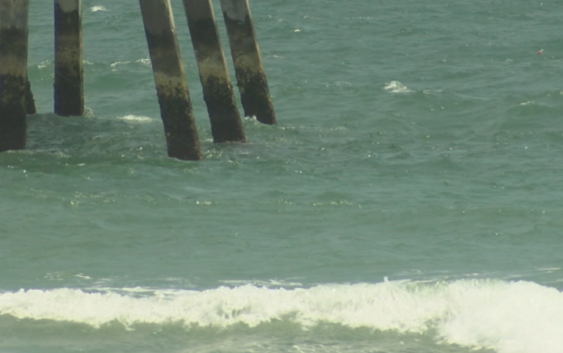- NC DOT wins national award for exceptional coordination during Hurricane Helene
- Texas identifies the 119 people killed in Hill Country floods
- Spring Hope residents, mayor call for stormwater fix after deadly floods kill 2
- Durham community riddled with sinkholes and flooding want changes
- Deadly floods prompt $20M flood alert system in San Antonio
Hurricane shifts sand in coastal waters, could increase swimming threats

WRIGHTSVILLE BEACH, NC (WWAY) — It’s no secret that Hurricane Florence did quite a bit of damage to our coastline. It’s damage that could be leading to dangerous swimming conditions this spring and summer.
Assistant Professor at UNCW Joseph Long says Florence was a storm that did quite a bit of damage.
“It takes Mother Nature sometimes years to bring that sand back up onto the beach to rebuild that beach,” Long said.
Long says that something that takes so long to rebuild, a storm can take away in a matter of hours.
“We saw shorelines eroding from 20 to 30 feet,” Long said. “In some locations, not necessarily on Wrightsville Beach, we saw the water levels and the waves chew away at the dunes.”
Lt. Sam Proffitt with Wrightsville Beach Ocean Rescue says they have also actually seen a complete shift in a nearby inlet since last summer.
While they is always a risk for rip currents along the coast, but he says they have had a bigger problem with rip currents at this time of year compared to years past.
Proffitt says the waters have completely changed at Mason’s Inlet.
“So the inlet has moved,” Proffitt said. “So as far as if you were to navigate through Mason’s Inlet, it has moved. You have to go in a different way compared to last year.”
He says with the shift of Mason’s Inlet makes risks for swimmers even higher.
“Swimmers need to be aware that if they do walk north of the last lifeguard stand to get in the water, especially from high tide to low tide, there will be a lot of water moving out and particularly can start to pull those people off the shore and into deeper waters,” Proffitt said.
Long and ocean rescue teams say the most important thing is that that people are educated.
“That they’re present and that people know about them,” Long said. “That they come to the beach equipped with knowledge that today is a hazardous day based on the wave conditions and on the surf zone conditions.”
Proffitt says some easy ways to spot rip currents are by noticing an area of water that looks discolored or a channel of water moving out. He reminds people to make sure they are always swimming near lifeguards.